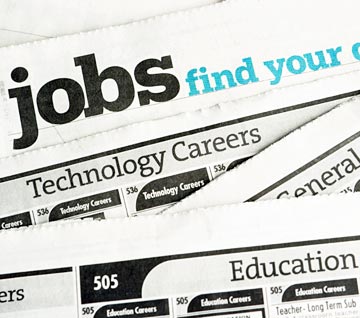Payroll
U.S. Employment Rose in August
U.S. hiring picked up in August and wage growth slowed, offering a mixed picture of both resilience and moderation in the labor market.
Sep. 07, 2023

By Augusta Saraiva – Bloomberg News (via TNS).
U.S. hiring picked up in August and wage growth slowed, offering a mixed picture of both resilience and moderation in the labor market.
Nonfarm payrolls rose by 187,000 after the prior two months were revised significantly lower, a Bureau of Labor Statistics report showed Friday. The unemployment rate climbed to 3.8%, the highest since early last year and largely reflecting a pickup in participation.
The payrolls figure also includes a combined drop of 54,000 in the film and trucking industries, mainly due to an entertainment strike and the shutdown of a major carrier, the report showed.
The labor market has been the stalwart of the U.S. economy this year, supporting renewed momentum that may help the nation avert recession — at least in the near term. While job openings and wage gains have both retreated in recent months, hiring and incomes are still firm enough to bolster consumer spending.
That said, Friday’s report offered fresh signs that hiring hasn’t been as strong as previously reported. June and July payroll gains were revised lower by 110,000, following data last week that estimated U.S. job growth was probably less robust in the year through March.
The unemployment and pay figures likely add to the case for the Federal Reserve to hold interest rates at a 22-year high this month and potentially leave them there for awhile. However, officials have indicated they may still consider another hike this year, especially if inflation fails to keep cooling.
Treasury yields slid, S&P 500 index futures extended gains and the dollar weakened after the report. Traders continue to see the Fed leaving interest rates unchanged this month, and they also lowered the probability of a hike in November.
The report showed more people are coming back into the labor force, which may also help soften wage pressures. The overall participation rate — the share of the population that is working or looking for work — rose for the first time since March to 62.8%, the highest since February 2020. For those ages 25-54, known as the prime-age group, it approached a record.
With the supply and demand for labor coming more into balance, the outsize pay gains during the pandemic have faded. Average hourly earnings were up 0.2% from July — the smallest increase since early last year — and 4.3% from a year earlier.
The August advance in payrolls was broad based, led by gains in health care, leisure and hospitality and construction. Manufacturing payrolls increased by the most since October and reflecting more hiring in machinery and fabricated metals.
Job growth would have been even higher if not for strikes by Hollywood workers and the bankruptcy of trucking firm Yellow Corp. Looking ahead, a potential strike by the United Auto Workers and a possible government shutdown could also weigh on payrolls in the coming months.
Other firms are letting go of staff altogether. A measure of planned layoffs surged to a three-month high in August as companies like T-Mobile US Inc. and Charles Schwab Corp. announced fresh payroll cuts.
____
—With assistance from Matthew Boesler, Kristy Scheuble and Liz Capo McCormick.
___
©2023 Bloomberg L.P. Visit bloomberg.com. Distributed by Tribune Content Agency, LLC.
